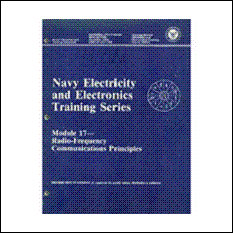Vertical Operating Mode
COMPONENTS USED TO SELECT THE VERTICAL OPERATING MODE
As we discussed earlier, channel 1 is being used to discuss basic operating procedures for the oscilloscope. The figure below shows how the vertical operating mode is selected. The VERT MODE section contains push-button switches that enable you to select channel 1, channel 2, and several other vertical modes of operation. For the present discussion, note only that CH 1 is selected by these switches.

Vertical deflection controls.
COMPONENTS USED TO DETERMINE PERIOD TIME OF THE DISPLAY
The TIME/DIV (the figure below) controls on the scope determine the period time of the displayed waveform. As we discussed earlier, the sweep generator develops the sawtooth waveform that is applied to the horizontal-deflection plates of the CRT. This sawtooth voltage causes the beam to move across the screen. This trace (sometimes called SWEEP) sets the frequency of the TIME BASE of the oscilloscope. The frequency of the time base is variable, which enables the oscilloscope to accept a wide range of input frequencies.
Again, two controls are used (the figure below). One is a multiposition switch (TIME/DIV) that changes the frequency of the sweep generator in steps. The second control is a potentiometer (VAR) that varies the frequency between steps. Each step on the TIME/DIV control is calibrated. The front panel has markings that group the numbers into microseconds and milliseconds.

Period time of the waveform (TIME/DIV).
The potentiometer is labeled VAR, and the panel has an UNCAL indicator that lights when the VAR control is in the variable position. When you desire to accurately measure the time of one cycle of an input signal, turn the VAR control to the CAL position and turn the TIME/DIV switch to select an appropriate time base.
Suppose you choose the 10-microsecond position to display two cycles of an input signal, as shown in the figure below. One cycle occupies 3 centimeters (small divisions) along the horizontal axis. Each cm has a value of 10 microseconds. Therefore, the time for one cycle equals 30 microseconds (3 ´ 10). Recall that the frequency for a signal may be found by using the following procedure:


Time measurement of a waveform (TIME/DIV).
In selecting a time base, you should select one that is lower in frequency than the input signal. If the input signal requires 5 milliseconds to complete one cycle and the sawtooth is set for 0.5 milliseconds per centimeter with a 10-centimeter-wide graticule, then approximately one cycle will be displayed. If the time base is set for 1 millisecond per centimeter, approximately two cycles will be displayed. If the time base is set at a frequency higher than the input frequency, only a portion of the input signal will be displayed.
In the basic oscilloscope, the sweep generator runs continuously (FREE-RUNNING); in more elaborate oscilloscopes, it is normally turned off. In the oscilloscope we’re using as an example, the sweep generator can be triggered by the input signal or by a signal from some other source. (Triggering will be discussed later in this chapter.) This type of oscilloscope is called a triggered oscilloscope. The triggered oscilloscope permits more accurate time measurements to be made and provides a more stable presentation than the nontriggered-type oscilloscope.
On some oscilloscopes, you will find a 10 times (10X) magnification control. As previously mentioned, this allows the displayed sweep to be magnified by a factor of 10.

















